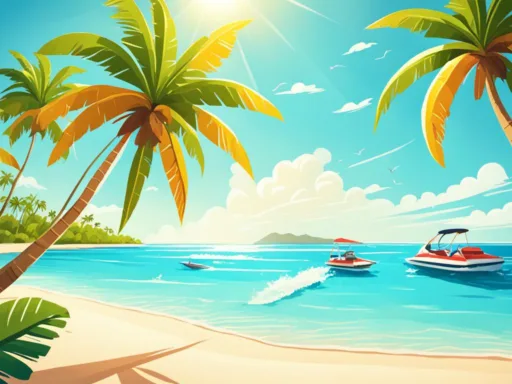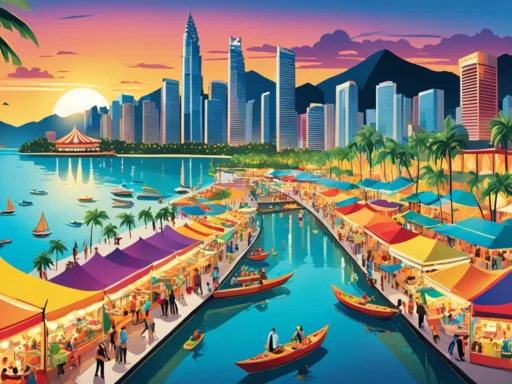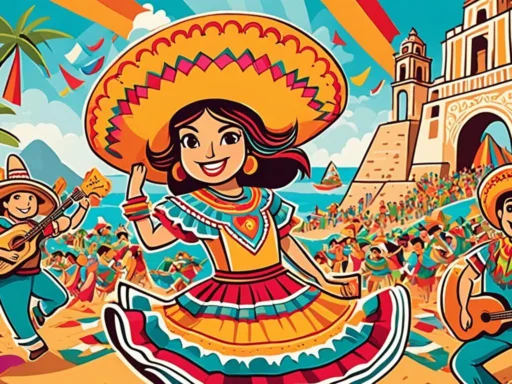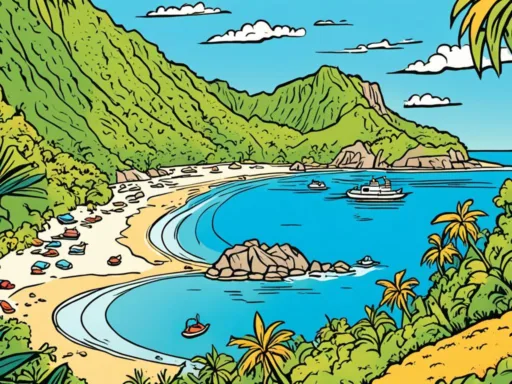Travel enthusiasts often ponder the best time to visit Venezuela, aiming to capture the country at its most inviting. While the prospect of a Venezuelan getaway conjures up images of towering waterfalls and sun-drenched beaches, savvy travelers know that timing is everything. With a reputation for its dynamic landscapes and vibrant urban spaces, Venezuela vacation planning demands insight into the nation’s climatic rhythm. Flanked by the Caribbean Sea and crowned by the majestic Angel Falls, the question isn’t just when to go to Venezuela, but how can the season elevate your journey?
In Venezuela, the equatorial embrace ensures minimal temperature variation, yet subtle seasonal shifts remarkably color the travel canvas. From November to April, the dry season offers an idyllic backdrop of clear skies and balmy warmth, essential for those looking to explore the outdoors. Picture prowling through the lush Amazon or basking in the urban vibrancy of Caracas, all accompanied by a tranquil 26°C (79°F) climate. This period, ripe for adventure tours and wildlife encounters, emerges as the quintessential phase for venturing into Venezuela’s natural and urban splendors.
Key Takeaways
- Dry season in Venezuela is ideal for visiting Angel Falls and Caribbean beaches.
- November to April offers clear skies and comfortable temperatures.
- Angel Falls is cooler during this time, perfect for exploration.
- Reduced humidity enhances comfort for city tours and outdoor activities.
- Visitors can experience diverse adventures from the Amazon Rainforest to the Andes.
- Venezuela travel tips include preparing for varying regional climates.
Best Time to Visit Venezuela: A Comprehensive Overview
Embarking on a Venezuelan adventure promises a blend of tropical climates, diverse landscapes, and rich cultural experiences. To make the most of your journey, understanding the country’s weather patterns and planning your visit accordingly is crucial. Whether you’re a sun seeker or a waterfall enthusiast, this Venezuela weather guide will help you determine the ideal time to visit Venezuela, factoring in the nuances of Venezuela’s tourism season and visiting Venezuela timing.
Understanding Venezuela’s Dry and Rainy Seasons
Venezuela’s tropical climate is marked by two distinct seasons: a dry season conducive for outdoor activities and a rainy season that brings life to its waterfalls and rainforests. The dry season from November to April sees the least amount of rainfall, offering clear skies and temperate weather, perfect for exploring urban centres and coastal areas. On the contrary, the rainy season spanning from May to October provides a different charm. The mornings often start bright and sunny, generating momentum for activities before the potential of afternoon showers.
Month-by-Month Analysis for Optimal Travel
Visiting Venezuela timing can make all the difference. While the dry months offer a predictable weather pattern, the rainy season holds unique attractions such as the powerful surge of Angel Falls. To assist travelers in fine-tuning their plans, here’s a month-by-month breakdown, fostering insights into the ideal window that aligns with your preferences:
- November to April: Perfect for city tours, beach expeditions, and trekking.
- May to August: Great for experiencing the grandeur of full-flowing waterfalls.
- September and October: A strategic time to witness atmospheric phenomena and still enjoy water-based excursions.
Venezuela Weather Guide: Temperature and Climate Variations
Given its vast geography, Venezuela’s temperature and climate can vary drastically from one region to another. Along the coast, such as in Caracas, you can expect warmer, more stable conditions, while the Andean regions tend to be cooler and more prone to rainfall. Below is an informative table shedding light on the diverse weather patterns that characterize Venezuela’s most visited destinations:
| Month | Caracas (Coast) | Angel Falls (Inland) | Maracaibo (West) |
|---|---|---|---|
| January | 26°C / 79°F | 24°C / 75°F | 28°C / 82°F |
| April | 27°C / 81°F | 26°C / 79°F | 30°C / 86°F |
| July | 26°C / 79°F | 28°C / 82°F | 29°C / 84°F |
| October | 26°C / 79°F | 30°C / 86°F | 30°C / 86°F |
Nurturing the optimal travel experience in Venezuela requires aligning your expectations with the country’s seasonal rhythms. Whether you long for the bustling city life, serene beaches, or the raw beauty of nature’s waterworks, knowing the Venezuela tourism season and selecting the right visiting Venezuela timing can greatly enhance the gratification of your voyage.
Top Recommendations for Visiting Angel Falls
Embarking on a journey to Angel Falls, a celebrated highlight among Venezuela’s natural wonders, requires strategic planning to enhance the overall experience. The Best Time to Visit Venezuela, particularly for an Angel Falls visit, is during the dry season. However, the falls are most spectacular when water levels peak from May to November, making this period ideal for breathtaking views and river expeditions.

Venezuela trip advice from seasoned explorers suggests allocating several days for a deep dive into the jungle’s heart. The key to maximizing your visit lies in preparation; essential items include durable hiking boots for treacherous paths, insect repellent against the tenacious mosquitos, and a refillable water bottle to stay hydrated.
Your accommodations en route to Angel Falls capture the essence of adventure, often comprising nights in hammocks, which allow for a profound communion with nature. Listen to the chorus of the surrounding wilderness as you drift off, comfortably cradled by the forest’s embrace.
- Plan your journey during the dry season for clear trails
- Visit from May to November for full water flow and majestic views
- Include essential gear like sturdy footwear, mosquito repellent, and hydration plans
- Embrace the authentic jungle experience with hammock accommodations
- Consider September and October, prime months as attested by frequent visitors
George, a frequent traveler to Angel Falls, proclaims, “September and October present a window where the grandeur of high water levels fuses with the manageable rainfall, crafting the most favorable conditions for this Venezuelan expedition.”
By following these recommendations, your excursion to the towering Angel Falls is poised to be an unforgettable tale of awe-inspiring natural beauty and thrilling adventure.
Experiencing the Venezuelan Caribbean: Idyllic Beaches Await
If you’re in the midst of Venezuela vacation planning, envisioning the perfect escape to sun-drenched shores, the Venezuelan Caribbean is your ultimate destination. A mosaic of stunning beaches unfurls before you, promising an unmatched seaside sojourn.
The Allure of Venezuelan Caribbean Coastline
The northern Falcón coastline is home to Morrocoy National Park, a quintessential beach experience in Venezuela where powdery white sands meet the azure waters of the Caribbean Sea. Accessible from the coastal towns of Tucacas and Chichiriviche, the park features an array of cayes and beaches, each offering its unique charm and tranquility.
Planning Your Sun-soaked Getaway: Attractions and Activities
As you narrow down the Best Time to Visit Venezuela for your coastal adventure, consider the dry season—your passport to uninterrupted sunshine and balmy days. The pleasures of the Venezuelan Caribbean beaches abound, from Choroni to the secluded coves of Morrocoy National Park, which becomes a haven for snorkeling enthusiasts, sun worshippers, and leisure seekers alike.
| Activity | Best Time | Recommended Beach |
|---|---|---|
| Snorkeling | Dry Season (Nov-Apr) | Cayo Sombrero |
| Beach Relaxation | All Year Round | Choroni |
| Boat Tours | Dry Season (Nov-Apr) | Cayo Muerto |
| Wildlife Viewing | Dry Season (Nov-Apr) | Morrocoy National Park |
Whether it’s a spontaneous getaway or a meticulously planned holiday, taking into account the seasonality of weather and tourist flux can dramatically enhance your experience. Dip your toes into the warm sands, explore the underwater tapestry of coral marvels, or simply soak up the serene beauty of the Venezuelan Caribbean. Your adventure awaits in this tropical paradise.
Insider Tips: Navigating Venezuela’s Unique Regions
For travelers who thrive on exploring off-the-beaten-path destinations, Venezuela’s diverse regions offer a tapestry of unique landscapes and cultural experiences. From the abundant wildlife in the Llanos to the soaring peaks in the Andes, the ideal time to visit Venezuela often depends on the specific adventures you seek. To capture the essence of these regions, planning your journey around the country’s climatic patterns is key. Wildlife enthusiasts looking to witness the rich variety of fauna in the Llanos will find the dry season between October and April to be the most rewarding period. It’s when the verdant plains become a stage for nature’s drama to unfold, with a high chance of spotting capybaras, caimans, and the vibrant scarlet ibis in their natural habitat.
The daredevils and hiking aficionados won’t want to miss out on the Sierra Nevada National Park. Here, the rugged terrain and high-altitude trails beckon throughout the year, with the drier months providing more comfortable conditions for trekking. But Venezuela travel tips don’t just revolve around nature; the country’s vibrant culture and gastronomy deserve equal attention. Dive at any time into the lively street food scene, sampling local favorites such as crunchy tequeños, the versatile arepa, and the flavorsome Parrilla. Each culinary delight serves as a window into the nation’s soul, mirroring its rich history and diverse influences.
Embarking on a journey through Venezuela’s unique regions grants seasoned travelers with unique Venezuelan experiences that transcend conventional tourist paths. From the rich tapestry of its natural landscapes to its pulsating cultural ethos, Venezuela surprises and captivates at every corner. Whether you’re there for the fauna, the food, or the mountainous treks, the country is poised to offer wondrous discoveries that cater to all whims. Remember, the rich tapestry of Venezuelan life is not just found in its renowned wonders like Angel Falls but also in the pulse of its cities, the rhythms of its local music, and the hospitality of its people.






